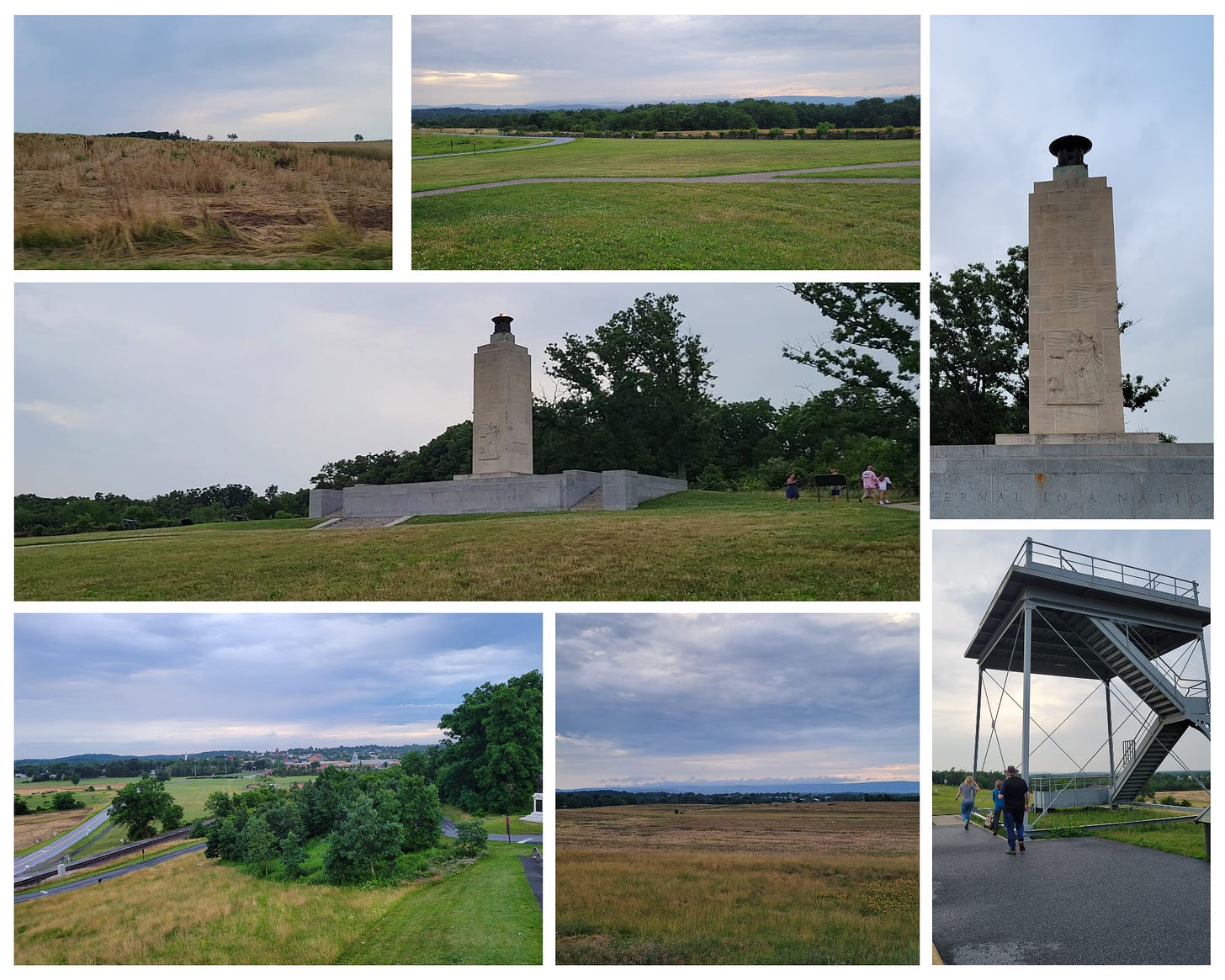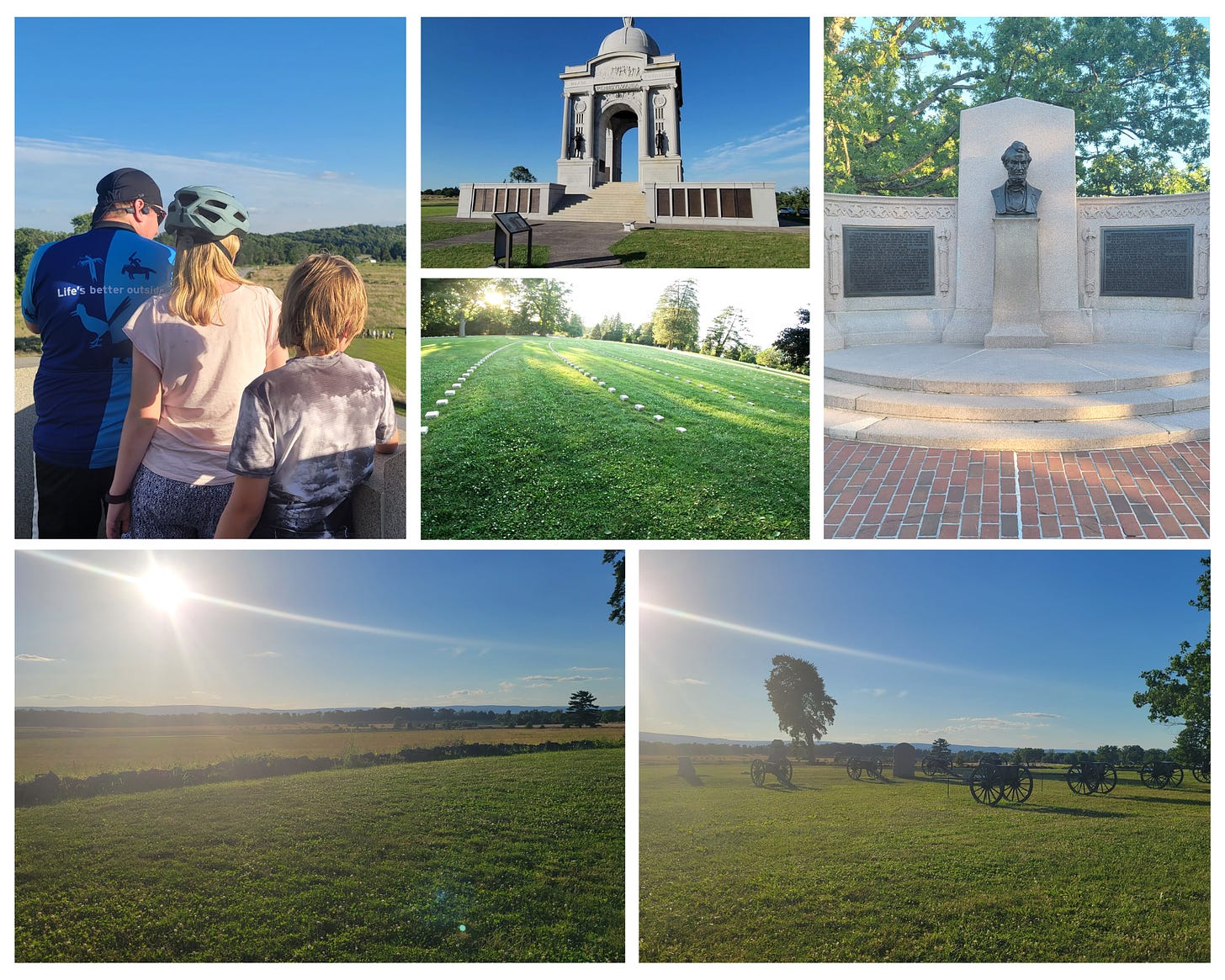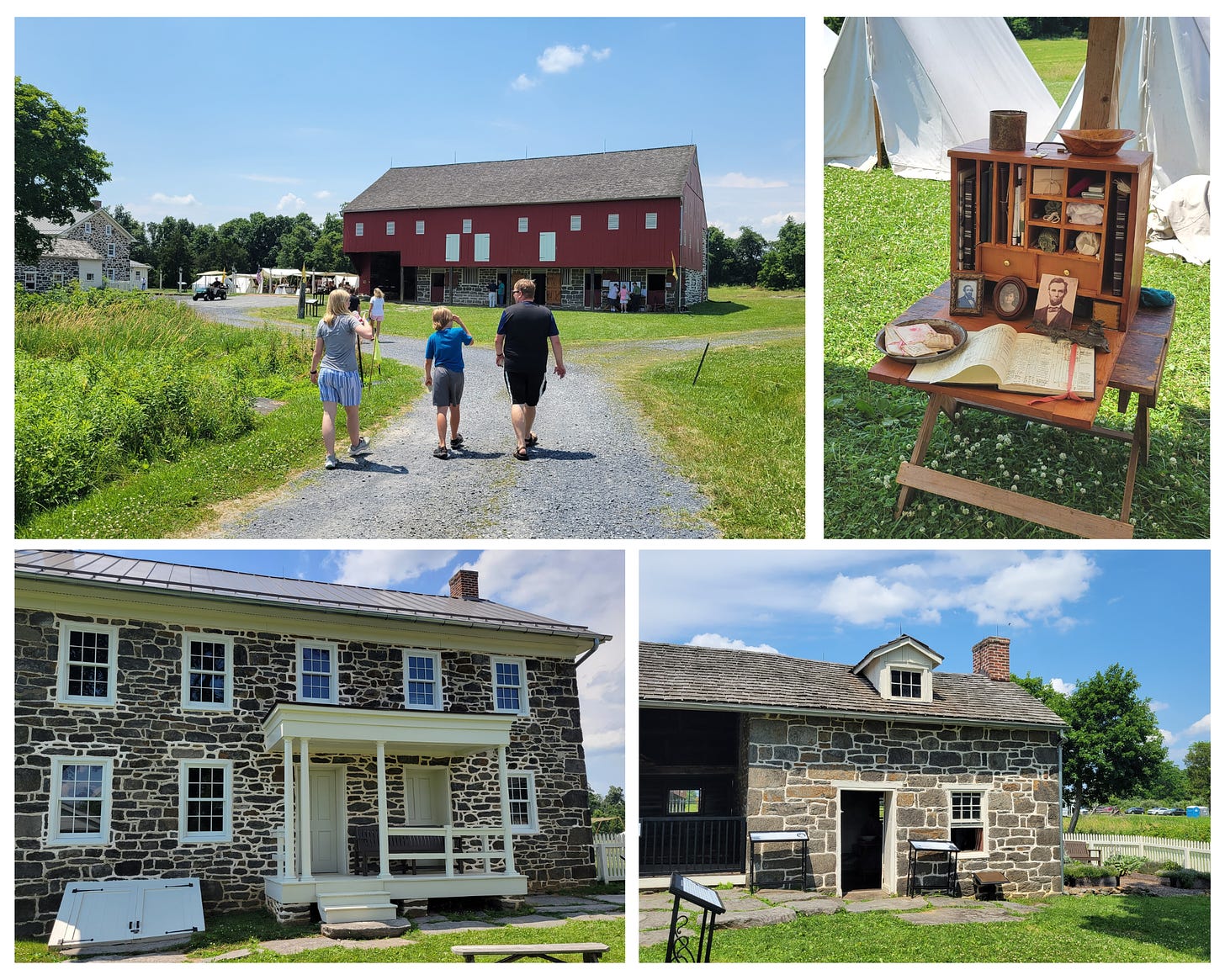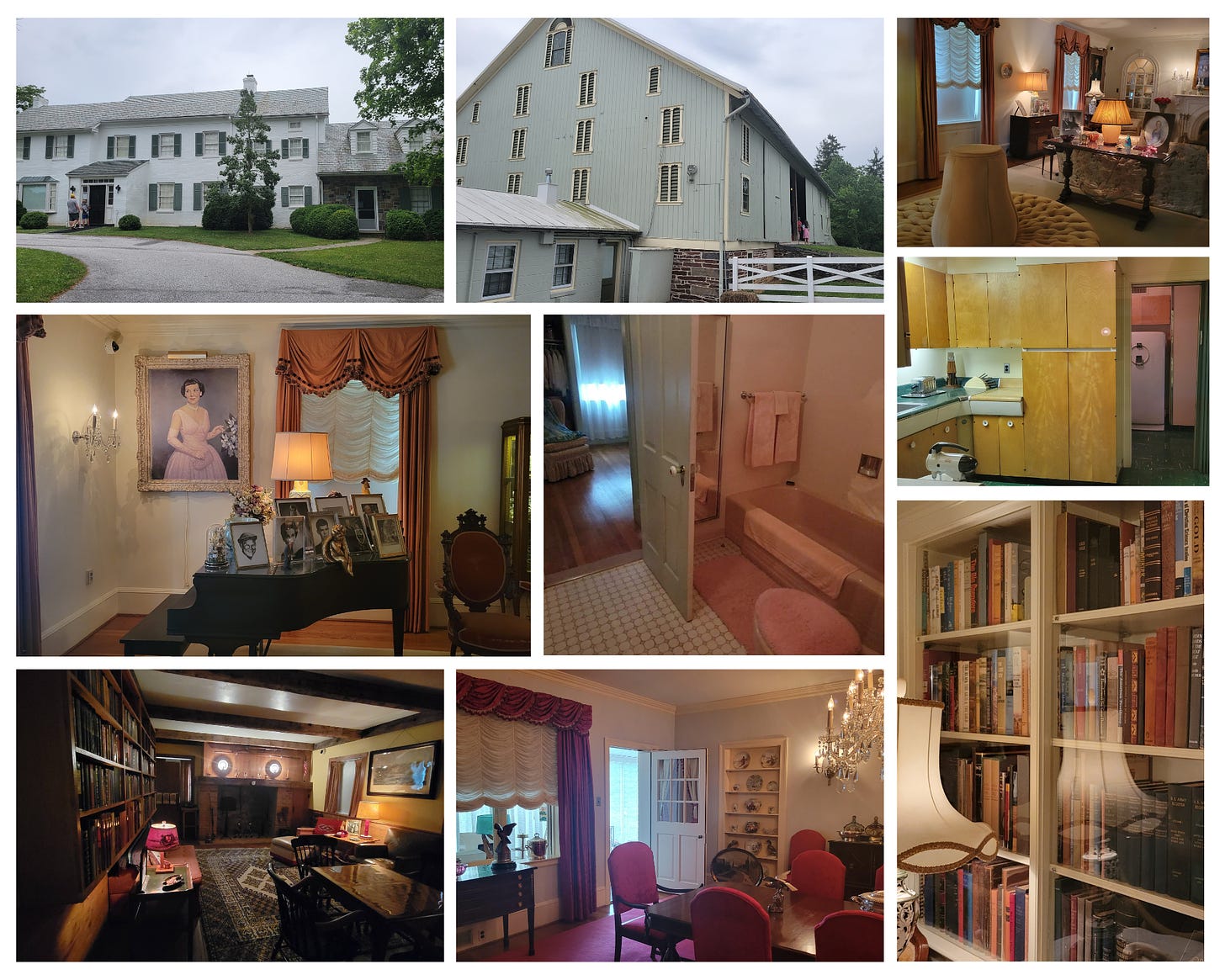A Family Visit to Gettysburg
We returned to the historic battlefields to help our children better understand American history
In Mission: Wanderlust, I write and podcast about our family’s travel adventures and the things that we have learned along the way.
When we started making plans for a summer vacation, I consulted the kids to see what they wanted to do.
Our son, full of confidence, declared that he wanted to go to Gettysburg as part of his vacation.
So I planned an east coast trip full of places that Jeff and I had visited but our kids had not. My initial plans took us all the way to Maine so that Jeff and I could add some vacation destinations that we had not yet visited together, but a June trip to Houston with the kids and high gas prices meant cutting the second week I had initially planned.
Regardless of the other planned stops, Jeff and I were preparing for our third trip to the national military park. The last time we visited was in 2013 for the 150th anniversary of the battle of Gettysburg. This time we were taking our entire family to Pennsylvania to put important American history into perspective.
When we left the Flight 93 memorial, the truck GPS guided us to hilly backroads that took us down into Maryland, through the narrow Catoctin Mountain National Park passage, and back into Pennsylvania. And no, we did not stop at the national park to get a stamp just because we accidentally found ourselves in a national park.
We pulled into Artillery Ridge Campground1 with plenty of sunlight to park and make a late dinner. Private campgrounds are not our preferred go-to, but a couple of disastrous stops on our 2021 pre-move vacation taught me that convenience has to sometimes trump a desire for lower cost and more space. There were a lot of campers for us to work around, especially since we were arriving on a Saturday night, in the middle of other campers’ weekend travels, but we eventually got parked, the kids got out and explored, and I got us a late dinner and an early enough bedtime so that we could get up in the morning and explore the national park.
The next morning we got onto our bikes and rode the 1.5 miles from the campground to the park visitor center, making a stop at the Pennsylvania Memorial, where reenactors were demonstrating rifle tactics and displaying typical food and medical treatments in a tent. By the time we arrived at the visitor center, we had just enough time to get tickets for the last shuttle out to George Spangler Farm and eat a fairly tasty lunch at the Refreshment Saloon.
When we visited Gettysburg in 2013, the George Spangler Farm and Field Hospital had just been opened as an additional site inside the historic park. Run by the Gettysburg Foundation, the farm is only open on weekends during the summer and during special occasions during other seasons. Since we needed to take the shuttle there, we had to go Sunday if we had any desire to go while we were in Gettysburg.
Like most properties in the area, the farm was used as a field hospital almost as soon as the first battle began. Both Union and Confederate soldiers received care in the barn and the Spangler family moved to the upstairs of their house so the lower quarters could be used for hospital activities and administration during the duration of the battle. While at the farm we listened to a fascinating lecture about medical practices (which was probably more interesting for the adults than the kids, ha!), looked at field instruments used by medical staff, and toured the restored building.
When we returned to the visitor center, we had just enough time to watch the 20-minute film, “A New Birth of Freedom,” and the cyclorama presentation highlighting the events of Pickett’s Charge. Both are stunning presentations that provide important historical background before visiting the rest of the park. With only 30 minutes before the closure of the visitor center, we raced through as much of the thorough museum as we possibly could with a promise that we would return the next day, walked through the gift shop, and headed back onto our bikes for dinner at the campground.
After dinner we headed back to the park to drive around the northern edge of the battlefields, visiting McPhearson Ridge, the Eternal Light Peace Memorial, and Oak Ridge.2 With the unseasonably cooler temperatures (it was in the 70s by the time we explored the park), we were able to watch the sun set behind storm clouds and catch stunning views without the hinderance of crowds.

One of the things that struck me the most on our first visit to Gettysburg in 2006 was the fact that we were driving through a living, breathing town. For some reason, I had always been under the impression that the battle took place in the middle of nowhere. It never dawned on me that the reason it was called “Gettysburg” was because the three-day battle happened in an actual town, but it did. There are several buildings throughout the town that still bear the 160-year-old scars of a destructive battle. While the battlefields help visitors understand the scope, the town helps visitors understand the civilian cost. We got ice cream at a local shop and then walked around the area, reading signs and taking in the civilian history of the Civil War.

We wrapped up the evening with one of the advantages of staying at a highly rated RV resort: cornhole and minigolf. It wasn’t that we weren’t exhausted, but we wanted to experience everything that we could.
Jeff and I had every intention of biking Gettysburg with our kids. After all, it had been one of the highlights of our trip together nine years before. But it was already raining off and on when we woke up the next morning, and despite the weather forcast, it wasn’t showing any signs of letting up. We piled into the truck and took off for at least the first few stops, driving past the North Carolina Memorial, the Virginia Memorial, Pitzer Woods, the North Carolina Memorial, and stopping at the observation tower overlooking Warfield Ridge.

When Jeff and I visited in 2013, I discovered that the Eisenhower National Historic Site was also in Gettysburg. I had asked if we could go and he gave me a resounding no. We didn’t need to go just so we could get another stamp.
This time I was determined to make the stop, the only problem is that it is not an easy task. The NPS really wants people to take a tour bus out to the site to eliminate parking issues and control crowds. Now, usually I will follow what the NPS wants us to do, but there is free, limited public parking available at the site and we like to be on our own schedule when we can. We finally figured out the map directions we had specifically asked for at the visitor center (GPS will take you back to the Gettysburg visitor center and not to the historic site) and found our way to the gravel parking.
We walked through the Eisenhower farm to the barn and house, property the Eisenhowers purchased shortly before he chose to run for president. We were there with enough time to explore the grounds and then participate in the hourly tour of the house, joining the group that had been bussed in from the visitor center. We learned more history than I expected that we would and I suddenly found myself enamoured with the 34th president of the United States. (Side note: When we bought our house in Fort Wayne, we were told that our pink bathroom—that we eventually gutted—was a part of the Mamie Eisenhower legacy and after seeing the bathrooms in their house, I can see why.) The rest of the family might have been wondering why we had to take this historical side trip, but I was happy that we did.
We stopped at General Pickett’s Buffet for a late lunch/early dinner before heading to the visitor center for a return to the museum and gift shop. We continued our drive to Little Round Top (which is now closed for repairs), the Wheatfield, and the Peach Orchard before returning to the campground to get our bicycles.

We ended our day on bikes, enjoying the sunshine that finally came out to light our way to the Pennsylvania Memorial, the High Water Mark where the Confederate Army got closest to victory, and the National Cemetary, a sobering reminder of the cost of the Civil War and every war since. Every body that was collected after the battle, both Union and Confederate, was given a final resting place with a stone marker with their state of origin. The staggering scope of the cemetary left me speechless as we walked around square after square.

Gettysburg is one of those places that I feel everyone should visit at least once, if only because it gives an important context for a lot of the problems that still plague us as a country today. Nowhere was this more evident than in seeing the number of small Confederate flags sprinkled throughout the park, a harsh reminder of how far we have come as a country and how far we still need to go. Our kids got some important Civil War history and context for their future studies, and we were there to experience it with them. The bonus? This area of Pennsylvania is beautiful and worth a stop for any number of days.
And while I don’t regret a third trip to the national park, I think we can put this particular park to bed.
The YouTube summary of our trip to Gettysburg can be found here:
Please “like” by clicking on the ❤ and share this post with your friends so that others can join me on the journey.








Sarah, thanks for posting this. Brought back memories of my own past visit. A wonderland for history nuts like me.
Mr G's!! We found this ice cream place too in the short time we were there and LOVED it. It was the first stop after the marathon to treat ourselves. LOL. These pictures are gorgeous and we all want to go back again. There is so much we still need to discover and learn. I had no idea how much there was to see and do. Thank you for sharing this post.